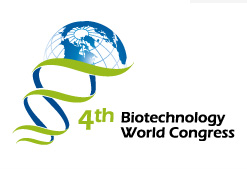
Advisory Board Member

Prof Edmond Fischer (born 1920), is a Shanghai-born Swiss biochemist. He completed his PhD in chemistry during World War II at the University of Geneva (Switzerland was officially neutral during the war). After completing his PhD, he went to the United States, to conduct postdoctoral work. He had originally planned at working in Caltech but instead changed to the University of Washington, Seattle because it reminded him and his wife of Switzerland. There he met his eventual collaborator Edwin Krebs. Fischer joined the department of physiology at the University of Washington, Seattle. Physiology is the study of the normal functions of the body and the various organs.
Physiology research in the past focused on observing a physiological response followed by trying to identify the reason for it, research today isolates genes and proteins and then tries to identify what they do. Many important physiological responses were found to be controlled by hormones from the endocrine glands.
Both Fischer and Krebs were then post-doctoral fellows (i.e. they did not have their own lab) in the Carl and Gerty Cori lab. The Cori’s were prominent world leaders in endocrinology.. Edwin Krebs was hesitant, as he later remarked in an interview, “the fact that I had been in Cori’s lab… at that time, post-docs when they left the lab did not work on the problem that was going on in their previous lab.” He decided to work on it, after rationalising that five years out of Cori’s lab would have blurred that non-crossable line.
Even with a larger question in mind, progress requires small and steady steps to a goal. Krebs and Fischer decided to focus on the problem of phosphorylase activation-inactivation. Phosphorylation is the process of adding a phosphate group a protein or other organic molecule. This process serves as a switch to turn on/off a particular protein activity.
They honed in on the enzyme glycogen phosphorylase. Glycogen degradation is important because it is what produced blood glucose in the liver and Adenosine Triphosphate (ATP), the energy currency that all living things need to survive. Phosphorylase was known then to be under complex hormonal control. At the resting state, phosphorylase is inactive, when conversion is required for various purposes, the enzyme is instantly activated by hormones such as insulin or adrenalin. However, after a meal when there was a lot of glycogen phosphorylase was inactivated. What was clear was that phosphorylase was pivotal in this cycle.
The work was not something entirely new. Early in the 1930s, husband and wife team Carl and Gerty Cori had discovered that the first step of glycogen degradation was catalysed by phosphorylase. The Cori Lab had isolated both the active and inactive form of phosphorylase and assumed that a product Adenosine Monophosphate (AMP) was the key in the reversal of the process. Their experiments failed, they could not find AMP. Instead of carrying on, they dropped the project and did other work. The Cori’s would go on to win the Nobel Prize for their other work for their discovery of the Cori Cycle.
The Cori method for obtaining phosphorylase was rather ancient even by 1950s standards – they use simple filter paper. Krebs and Fischer decided that they would be more modern and use centrifugation. Somehow, they could never obtain the active phosphorylase. Frustrated, they decided to revert to Cori’s method. The results would stun them.
After passing through the filter paper, the initially inactive phosphorylase was activated. For the two ambitious young men, that was a massive disappointment – they had thought that they would discover some complex system instead of simple filter paper. They refused to accept that the inactive phosphorylase was what it was, writing in their logbooks “false” phosphorylase B instead. It was only later, that they discovered that the filter paper then had minute amounts of Calcium ions (Ca2+), which was sufficient to convert inactive B form phosphorylase into active A form phosphorylase with the use of ATP. ATP degraded very quickly, however.
The two young men had no access to ATP, what they had though were friends.
Arthur Kornberg (who would go on to win the Nobel Prize for Physiology or Medicine in 1959) was then working in the University of Washington in St Louis, Missouri. He had ATP to spare. They then asked their friend to send them some.
Kronberg sent them some ATP samples and they managed to prove that inactive phosphorylase was converted into an active form by a phosphorylase kinase, Magnesium ion, ATP and Ca2+; and the active form was made inactive by a phosphorylase phosphatase. They shot a paper off to the Journal of Cell Biology and were fortunate to have in them Cori who was as excited as they were.
The system became even more complicated the more they studied it. They soon realised that the system was not linear but a cascade of kinases. It was at the same time that Earl Sutherland and his group reached the same conclusion. Sutherland discovered cyclicAMP as a mediator for hormones that conventional wisdom was turned on its head. However he had no idea what it could do. After hours of talking and drinking they convinced Sutherland to send them samples of cyclicAMP, enabling the eventual discovery of hormonal control of glycogenolysis.



























